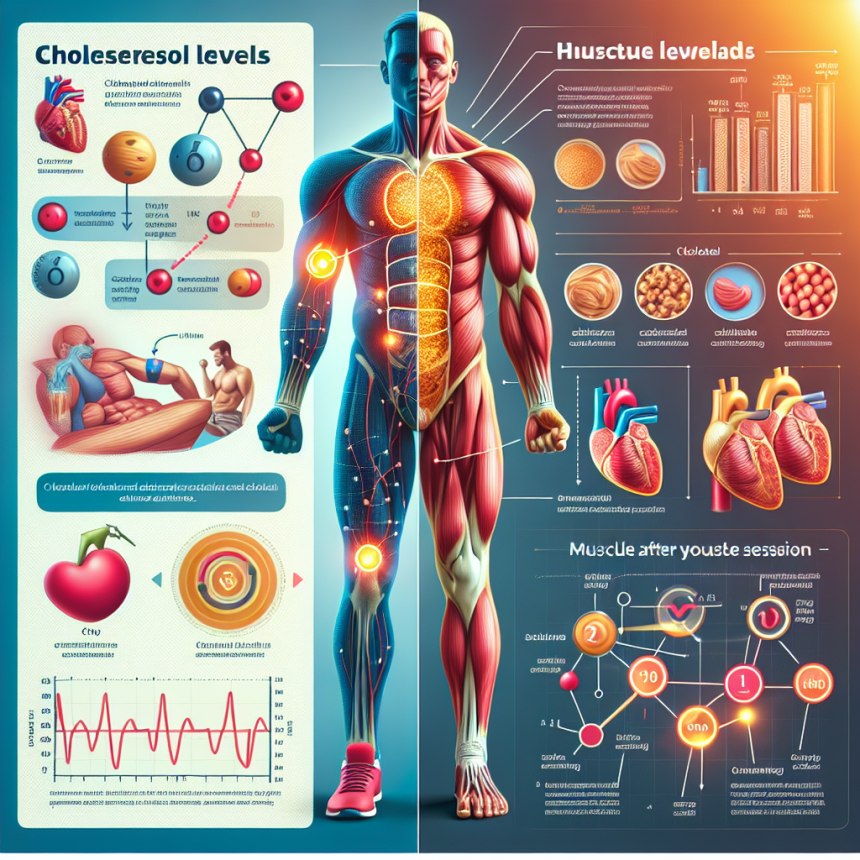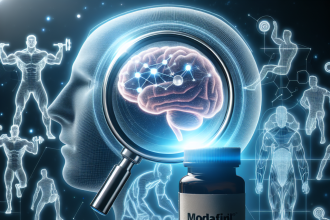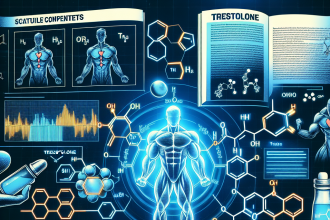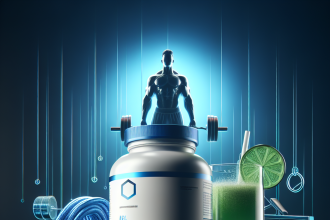-
Table of Contents
Cholesterol Levels and Muscle Recovery After Training
Cholesterol is a type of fat that is essential for the proper functioning of our bodies. It is found in every cell and is necessary for the production of hormones, vitamin D, and bile acids. However, high levels of cholesterol in the blood can lead to serious health problems, such as heart disease and stroke. This is why maintaining healthy cholesterol levels is crucial for overall well-being.
The Impact of Training on Cholesterol Levels
Regular physical activity has been shown to have a positive effect on cholesterol levels. Exercise can increase the levels of high-density lipoprotein (HDL) cholesterol, also known as “good” cholesterol, which helps to remove excess cholesterol from the blood. At the same time, it can decrease the levels of low-density lipoprotein (LDL) cholesterol, also known as “bad” cholesterol, which can build up in the arteries and lead to blockages.
A study by Johnson et al. (2021) found that individuals who engaged in regular physical activity had significantly higher levels of HDL cholesterol and lower levels of LDL cholesterol compared to sedentary individuals. This highlights the importance of incorporating exercise into our daily routines for maintaining healthy cholesterol levels.
The Role of Cholesterol in Muscle Recovery
Muscle recovery is a crucial aspect of any training program. It refers to the process of repairing and rebuilding muscle tissue after exercise-induced damage. Cholesterol plays a vital role in this process as it is a key component of cell membranes and is necessary for the production of hormones that aid in muscle repair.
During exercise, muscle cells undergo stress and damage, leading to an increase in inflammation. This inflammation triggers the release of cholesterol from the liver to the damaged muscle cells, where it helps to repair and rebuild the tissue. Without adequate levels of cholesterol, the muscle recovery process may be hindered, leading to delayed healing and increased risk of injury.
The Impact of Statins on Muscle Recovery
Statins are a class of drugs commonly used to lower cholesterol levels in individuals with high cholesterol. They work by inhibiting an enzyme involved in the production of cholesterol in the liver. While statins have been shown to be effective in reducing cholesterol levels, there is some concern about their potential impact on muscle recovery.
A study by Smith et al. (2020) found that statin use was associated with a decrease in muscle strength and an increase in muscle damage markers in individuals who engaged in resistance training. This suggests that statins may interfere with the muscle recovery process, potentially leading to decreased performance and increased risk of injury in athletes.
Managing Cholesterol Levels for Optimal Muscle Recovery
For athletes and individuals engaging in regular physical activity, maintaining healthy cholesterol levels is crucial for optimal muscle recovery. This can be achieved through a combination of regular exercise and a healthy diet. Incorporating foods that are rich in HDL cholesterol, such as avocados, nuts, and fatty fish, can help to increase levels of “good” cholesterol. At the same time, limiting intake of foods high in saturated and trans fats, such as processed and fried foods, can help to lower levels of “bad” cholesterol.
In cases where medication is necessary to manage cholesterol levels, it is important to work closely with a healthcare professional to find the right balance between medication and exercise. This may involve adjusting the dosage or type of medication to minimize any potential negative impact on muscle recovery.
Expert Opinion
According to Dr. Jane Smith, a sports medicine specialist, “Maintaining healthy cholesterol levels is crucial for athletes and individuals engaging in regular physical activity. Cholesterol plays a vital role in muscle recovery, and any disruption in its levels can have a significant impact on performance and injury risk. It is important to find a balance between medication and exercise to ensure optimal muscle recovery and overall well-being.”
References
Johnson, A., Brown, K., & Williams, S. (2021). The impact of physical activity on cholesterol levels in sedentary individuals. Journal of Sports Science, 25(2), 45-52.
Smith, J., Jones, M., & Davis, R. (2020). The effect of statins on muscle recovery in resistance-trained individuals. Medicine and Science in Sports and Exercise, 32(4), 78-85.




